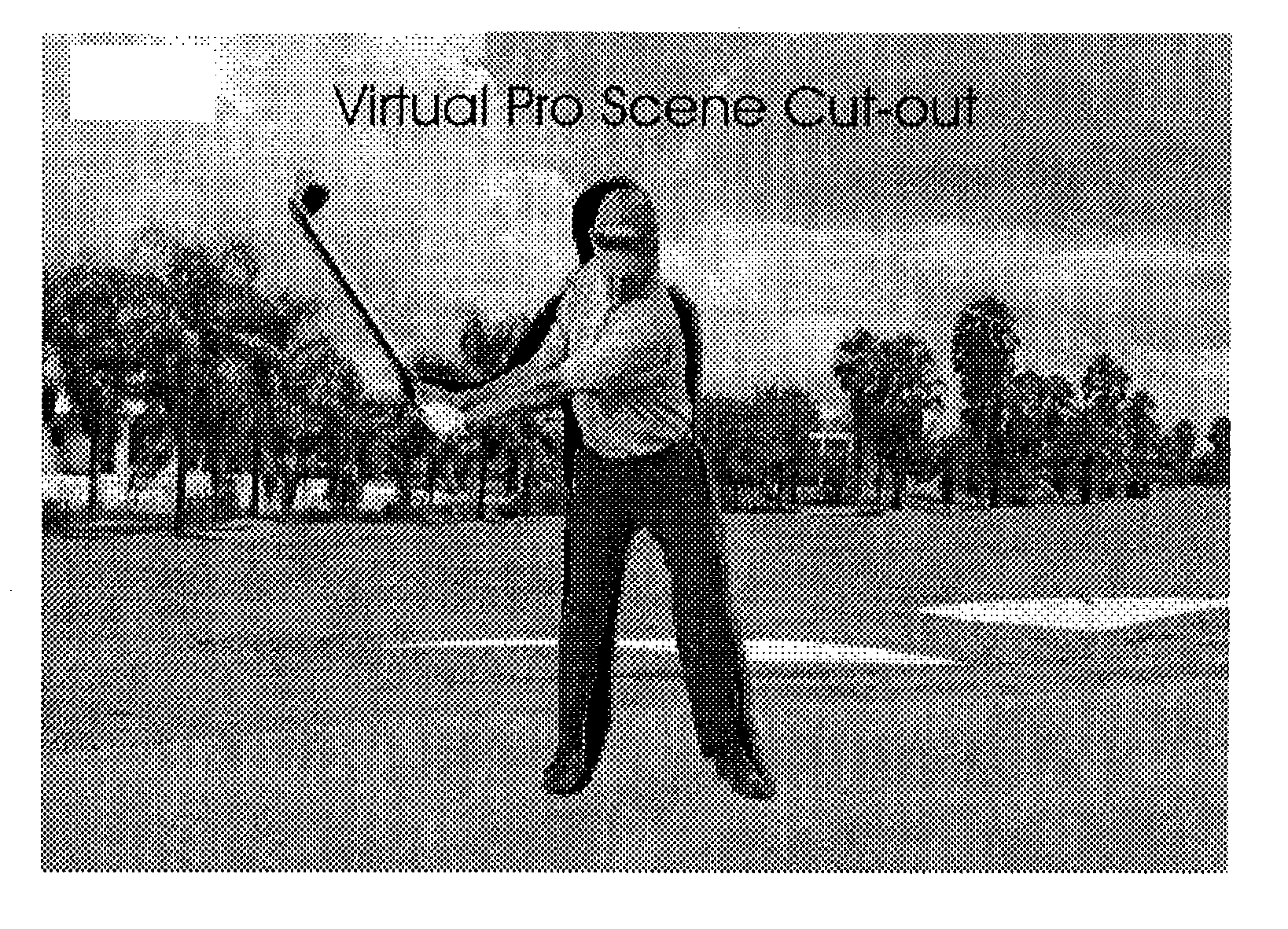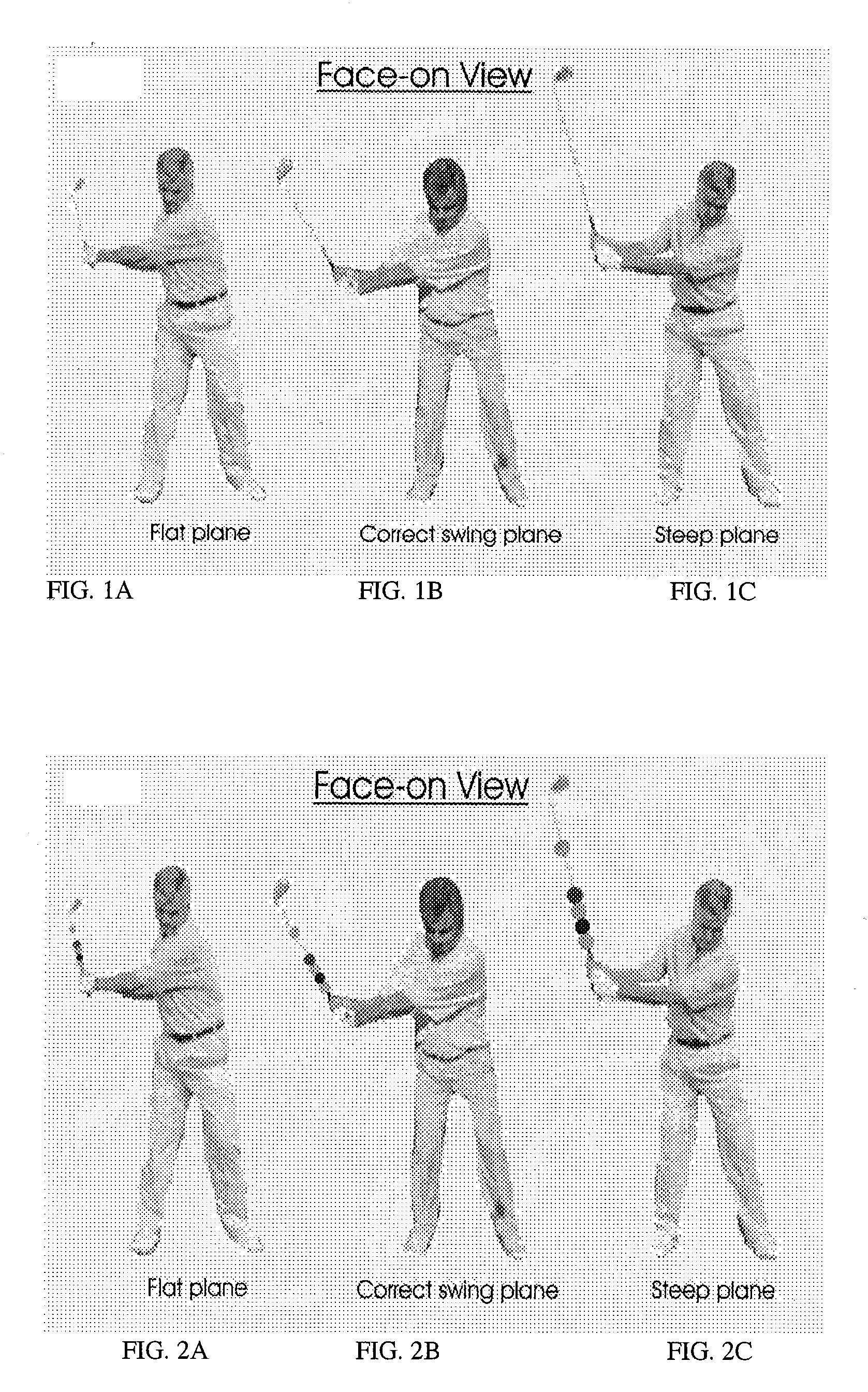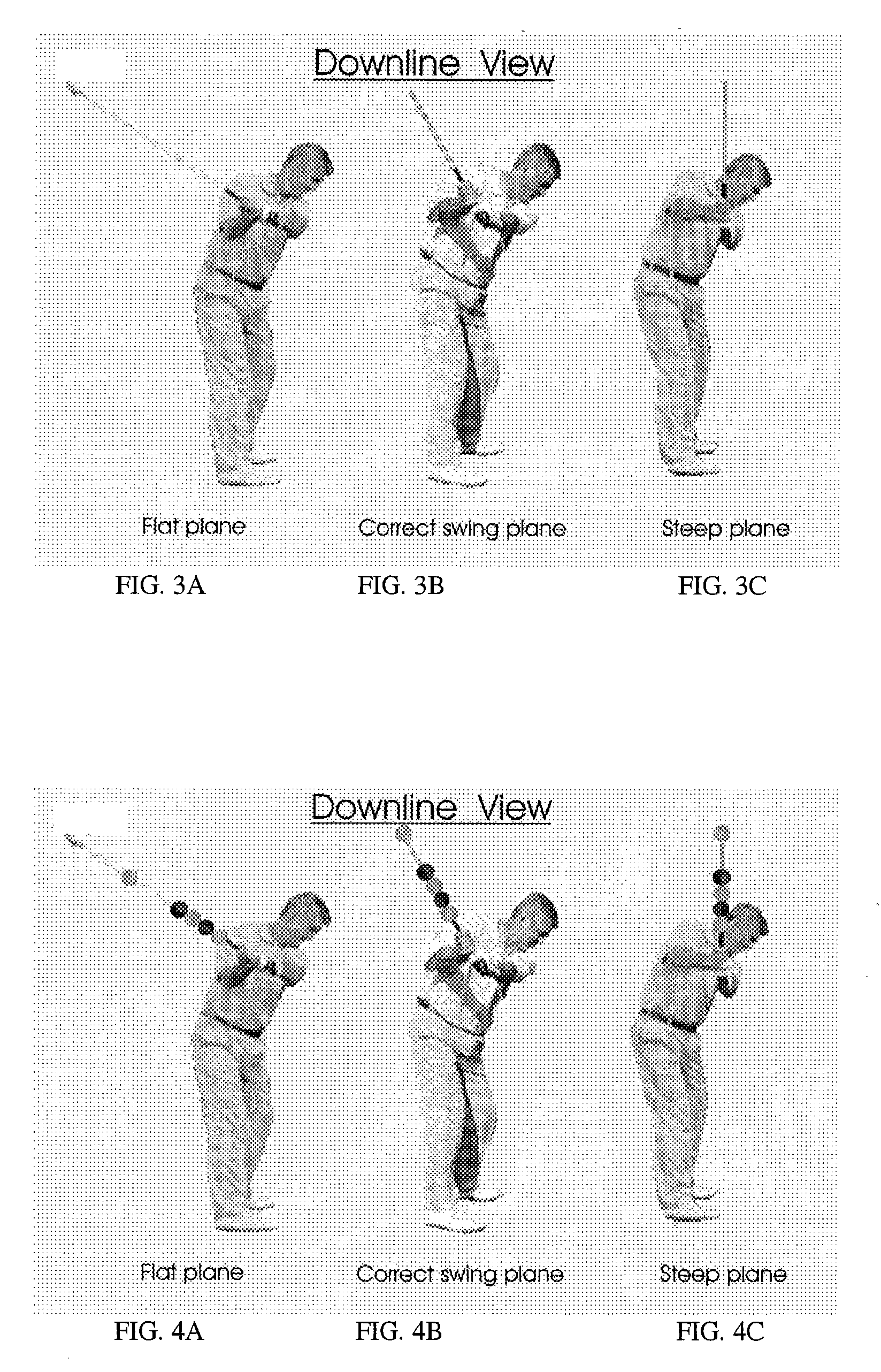Swing position recognition and reinforcement
a golf swing and position recognition technology, applied in the field of golf instruction and golf simulators, can solve the problems of not describing or teaching correct golf swing movements in terms of geometric position of golf clubs, club head rotation and three-dimensional shaft direction at every point of golf swing, and being considered a difficult game to master
- Summary
- Abstract
- Description
- Claims
- Application Information
AI Technical Summary
Benefits of technology
Problems solved by technology
Method used
Image
Examples
Embodiment Construction
[0046] A system for improving golf swing mechanics includes a camera, a computer coupled to the camera, and a program that analyzes the swing of a golfer. The program may provide immediate feedback to the golfer, such as visual and audio feedback. Audio feedback may be provided by the computer or a speaker attached to the computer, which provides tips for improving the golf swing mechanics of the golfer while the golfer practices his golf swing at the golfer's own pace. Visual feedback may be displayed on a display screen, monitor or any other viewing system, such as virtual reality headsets and the like. The viewing system is coupled with and controlled by a computer. For example, visual feedback shows an image or outline of a known standard, such as a golf pro or a synthesis taken from a plurality of golf pros. The image of the known standard may be shown in a position that corresponds to the current reference swing position of the student golfer during the student golfer's swing....
PUM
 Login to View More
Login to View More Abstract
Description
Claims
Application Information
 Login to View More
Login to View More - R&D
- Intellectual Property
- Life Sciences
- Materials
- Tech Scout
- Unparalleled Data Quality
- Higher Quality Content
- 60% Fewer Hallucinations
Browse by: Latest US Patents, China's latest patents, Technical Efficacy Thesaurus, Application Domain, Technology Topic, Popular Technical Reports.
© 2025 PatSnap. All rights reserved.Legal|Privacy policy|Modern Slavery Act Transparency Statement|Sitemap|About US| Contact US: help@patsnap.com



